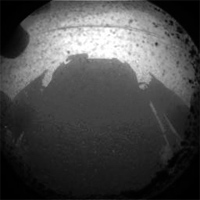
 I bought my daughter a telescope for Christmas. It’s a 70mm refraction telescope with a 9x and 25x eyepieces. I confess I’d been hankering for something bigger, maybe in the 4-6 inch reflecting range, but they were much pricier, and all the reviews pointed to this as an excellent starter telescope. I also knew it was powerful enough to see Saturn’s rings.
I bought my daughter a telescope for Christmas. It’s a 70mm refraction telescope with a 9x and 25x eyepieces. I confess I’d been hankering for something bigger, maybe in the 4-6 inch reflecting range, but they were much pricier, and all the reviews pointed to this as an excellent starter telescope. I also knew it was powerful enough to see Saturn’s rings.
So, we put it together, confirmed that the red-dot viewfinder was properly aligned, and waited for a clear night. And waited. And waited. That last week of December was pretty cloudy here in central Texas, but it did clear eventually, so we grabbed the telescope and headed out into the frigid night — well, at least as cold as it gets in this part of Texas, i.e. about 25F.
I had not done any preparation or research. I had no plan of observation. I had no star charts. Even the little star-map app on my phone was a bust since my phone is pretty poor at detecting its own orientation. But I figured we could just go out, point the telescope at some light in the night sky, and see what it was, a bit like those astronomers of the early 1600’s. Even with me living somewhat out in the country, they probably had much less light pollution than I did, but the quality of my optics were vastly better than theirs.
First of all, with 70mm of light-gathering aperture, the moon is way too bright to look at. Seriously. It wasn’t quite “do not look at moon with remaining eye, but I could see the moonlight blasting out of the eyepiece, illuminating dust particles. So, I gave up on any direct moon observations until we could add some kind of dark moonlight-filter to the setup.
Then I pointed it at some bright light about 20 degrees above the horizon. I used the viewfinder to line it up, then peered through the eyepiece only to find it empty. I looked through the viewfinder again to see that I was off target. I figured I must have bumped it, so I lined it up again, went to look, and damn, still nothing there. By the time I went to line it up again, I could actually see the thing moving. It was an airplane.
By this point, my nine-year-old daughter’s excitement is turning to impatience. It was literally — yes, literally — freezing out there, and all she had gotten for her troubles so far was to watch me play with her Christmas present.
I looked up at the sky, trying to find something interesting. I saw the constellation of Orion, and remembered something vague about how one of the stars in Orion’s belt was actually a nebula, or maybe a galaxy. Or was that in the sword hanging down from the belt? My daughter started pacing to stay warm.
A little bit up north from Orion, however, was a particularly bright light. I knew my compass directions well enough to know it wasn’t Polaris, so I figured there was a decent chance it was a planet. Given how far it was from the now-set sun, I knew it couldn’t be Mercury or Venus, and its color did not make me think of the red Martial soil at all. I didn’t think Uranus or Neptune could be seen with the naked eye, so I figured it was Jupiter or Saturn. Either one should make for an interesting peek.
So I pointed the telescope up, got down on the concrete of the driveway and peered through the viewfinder. I got the red-dot lined up on the bright light and took a look through the eyepiece.
For the first time, I was rewarded with not a blank field or some blinding moon. It wasn’t even a point anymore. It was a circle. It wasn’t a giant disk with swirling clouds and a big red dot, but it was clearly a circle. There were no rings, either, but this was clearly a planet, not some distant star.
I fine-tuned the position controls to center it, and handed it over to my daughter. “I think that’s Jupiter,” I told her.
 She looked through it and waved her arms in excitement. I told her to be careful not to bump the telescope, and she calmed down and peered some more. Eventually she stood, looked back up at the point in the sky and asked, “What are those dots next to it?”
She looked through it and waved her arms in excitement. I told her to be careful not to bump the telescope, and she calmed down and peered some more. Eventually she stood, looked back up at the point in the sky and asked, “What are those dots next to it?”
I looked up and only saw a scattering of other stars. “What dots?”
“In the telescope,” she said. “There are dots next to Jupiter.”
So I sat down on the ground and looked in the eyepiece again. Sure enough, there were four dots around Jupiter, two on each side, evenly spaced. I realized I had noticed them before but dismissed them as some optical artifact between the telescope lenses and my contact lenses. The spacing and arrangement was just too regular to be anything else. Or maybe I’ve just seen too many lens flare effects in recent Sci-Fi movies.
But no matter how much I blinked, the dots did not go away. Eventually they started drifting up out of the view as the Earth rotated, so I used the fine-tuning controls to bring them back into view. They were still there. I angled my head one way and another, but no matter what I did, they remained persistently visible and kept themselves aligned the same way.
That’s when it hit me. These were not optical artifacts. These were the four big moons of Jupiter: Io, Europa, Ganymede, and Callisto.
“They’re moons,” I told her. “Those are four of Jupiter’s moons.”
“Jupiter has moons?” she asked incredulously.
“Yes,” I told her all proud of passing on this knowledge, but then I realized that she was the one who had spotted them, not me. I had dismissed them as tricks of the light, but she had noticed them and wanted to know what they were. “They’re the four biggest moons of Jupiter, and you just discovered them.”
She looked back through the telescope again solemnly. “Moons… cool.”
 Since then, we’ve talked about how Galileo first saw them through his telescope just over 400 years ago. We’ve gone looking since, and seen them with different spacing, including seeing only three, figuring that one was either in front of or behind Jupiter. I’m trying to explain to her how you can discern that these different observations allowed Galileo to discern that they were circling Jupiter. The theological and political implications of that in what was then still officially an Earth-centered universe will have to wait until she’s a little older.
Since then, we’ve talked about how Galileo first saw them through his telescope just over 400 years ago. We’ve gone looking since, and seen them with different spacing, including seeing only three, figuring that one was either in front of or behind Jupiter. I’m trying to explain to her how you can discern that these different observations allowed Galileo to discern that they were circling Jupiter. The theological and political implications of that in what was then still officially an Earth-centered universe will have to wait until she’s a little older.
It’s easy for us to think of those early astronomers like Galileo as epic figures, locked in a struggle against the stratified philosophies of the universe. Yet, at the heart of it, he was just a curious fellow who asked the same question my little girl just asked. “Just what are those dots next to Jupiter?”
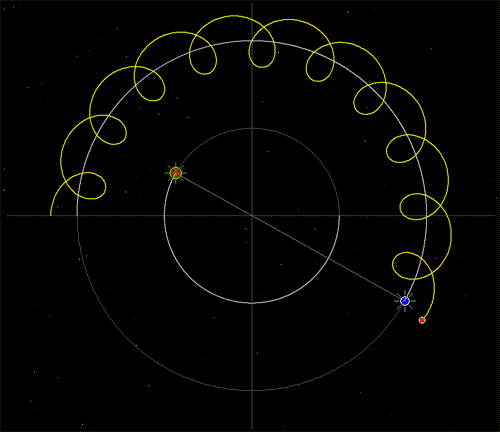 When the planet is much closer to one star than the other, the distant star does not have much gravitational influence on the planet’s orbit. It can orbit the smaller star in a nice circular orbit, almost as though the other star weren’t there at all. Well, it looks like a circular orbit from the point of view of the nearby star. From the point of view of the system’s center of gravity, it’s more akin to a spirograph. (And yes, I know that this dates me, but spirographs were cool!)
When the planet is much closer to one star than the other, the distant star does not have much gravitational influence on the planet’s orbit. It can orbit the smaller star in a nice circular orbit, almost as though the other star weren’t there at all. Well, it looks like a circular orbit from the point of view of the nearby star. From the point of view of the system’s center of gravity, it’s more akin to a spirograph. (And yes, I know that this dates me, but spirographs were cool!) Here, instead of Tatooine’s double-sunset, you’ll have half the year with no night at all. Sure, one sun will set, just as the other one is coming up. I imagine that will be summer, regardless of the planet’s tilt, because overnight lows only come when there is night. It might make for an interesting place to live, but the seasons could be a little intense.
Here, instead of Tatooine’s double-sunset, you’ll have half the year with no night at all. Sure, one sun will set, just as the other one is coming up. I imagine that will be summer, regardless of the planet’s tilt, because overnight lows only come when there is night. It might make for an interesting place to live, but the seasons could be a little intense. Here, your orbit is stable, close to circular, and any seasons you have will be due to axial tilt, not varying proximity to the great fiery balls in the sky. Plus, you know… the infamous double-sunset.
Here, your orbit is stable, close to circular, and any seasons you have will be due to axial tilt, not varying proximity to the great fiery balls in the sky. Plus, you know… the infamous double-sunset.
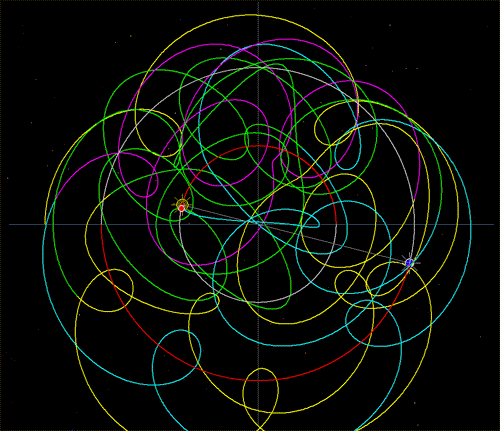

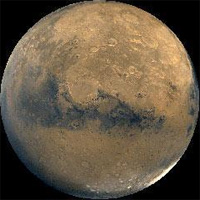 Mars One
Mars One Mostly, though, I want to talk about death, because that’s where these guys are headed. They make no bones about it, but this is a one-way ticket. I don’t think that they’re going to perish en route or in their first week, but the very real fact is that these volunteers are going to die on Mars. There is no return-flight on the horizon. This is nothing all that new in human history. There have been plenty of cases where colonists sailed off to the wilderness, fully intent on never returning, but in today’s world of jet travel, we’ve gotten away from that thinking.
Mostly, though, I want to talk about death, because that’s where these guys are headed. They make no bones about it, but this is a one-way ticket. I don’t think that they’re going to perish en route or in their first week, but the very real fact is that these volunteers are going to die on Mars. There is no return-flight on the horizon. This is nothing all that new in human history. There have been plenty of cases where colonists sailed off to the wilderness, fully intent on never returning, but in today’s world of jet travel, we’ve gotten away from that thinking.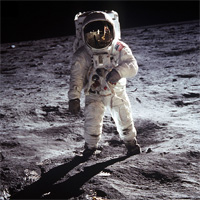 For others, there might be a little lure for fame. Certainly with the reality TV show funding the ongoing operations, there will be a lot of fame back on Earth, but there is also the compelling allure of a place in the history books. They will be up there with Columbus and Neil Armstrong in the history books. Martian high schools will someday be named after them. Historians will perpetually debate the critical airlock decision of 2027. For some people, that is essentially their immortality, and an early death on the mortal plane is worth it.
For others, there might be a little lure for fame. Certainly with the reality TV show funding the ongoing operations, there will be a lot of fame back on Earth, but there is also the compelling allure of a place in the history books. They will be up there with Columbus and Neil Armstrong in the history books. Martian high schools will someday be named after them. Historians will perpetually debate the critical airlock decision of 2027. For some people, that is essentially their immortality, and an early death on the mortal plane is worth it.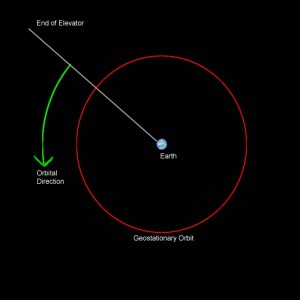
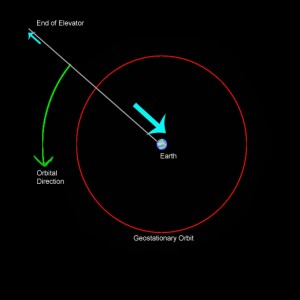




 Today I’m going to talk a little about ICEEs. Here in the states, an ICEE is a cold treat that’s basically flavored slush. It comes under many different brands, from Slurpee to Slushee to God-only-knowsee. It comes in a variety of flavors like cherry or raspberry as well as a few branded soda flavors including my favorite Coca-Cola. They’re great on a summer’s day, and I’ve probably suffered some kind of permanent damage from the cumulative effect of all the brain-freeze moments I’ve had from sucking these down too fast.
Today I’m going to talk a little about ICEEs. Here in the states, an ICEE is a cold treat that’s basically flavored slush. It comes under many different brands, from Slurpee to Slushee to God-only-knowsee. It comes in a variety of flavors like cherry or raspberry as well as a few branded soda flavors including my favorite Coca-Cola. They’re great on a summer’s day, and I’ve probably suffered some kind of permanent damage from the cumulative effect of all the brain-freeze moments I’ve had from sucking these down too fast.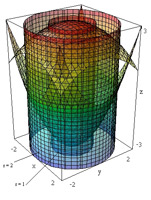 I figure it’s a combination of factors: the overall temperature of the mix, the ratio of ice to fluid, the viscosity of the fluid portion, the width of the straw, the atmospheric pressure, the height of the remaining stack vs. the length of the straw, and so on and so on. These factors together define a region in some multi-dimensional vector-space. Inside the region we are filled with that childhood joy, while outside we are left to the barren wasteland, cast out of our ICEE paradise.
I figure it’s a combination of factors: the overall temperature of the mix, the ratio of ice to fluid, the viscosity of the fluid portion, the width of the straw, the atmospheric pressure, the height of the remaining stack vs. the length of the straw, and so on and so on. These factors together define a region in some multi-dimensional vector-space. Inside the region we are filled with that childhood joy, while outside we are left to the barren wasteland, cast out of our ICEE paradise.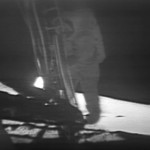

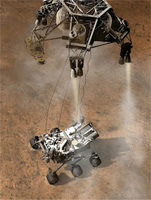 In my lifetime, Mars has gone from being a light in the sky to being a place. As corny as it sounds, it has become the new frontier, that faraway land across the sea, and I feel a definite itch to go see it. What things could I see that no one has seen before? What could I build there? Who else would I meet on such an exciting journey? What mark would I leave on such a world?
In my lifetime, Mars has gone from being a light in the sky to being a place. As corny as it sounds, it has become the new frontier, that faraway land across the sea, and I feel a definite itch to go see it. What things could I see that no one has seen before? What could I build there? Who else would I meet on such an exciting journey? What mark would I leave on such a world?